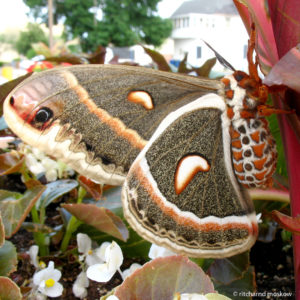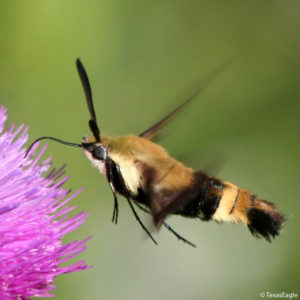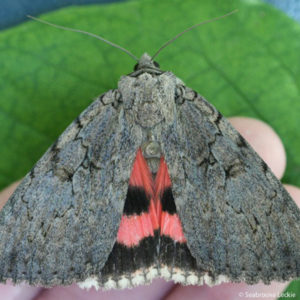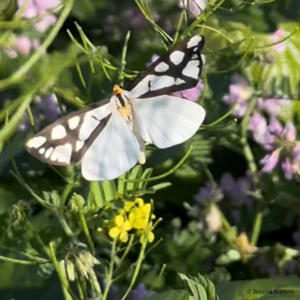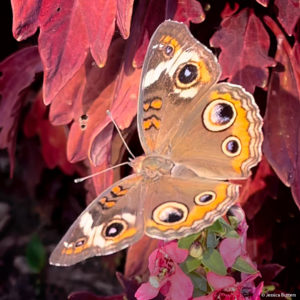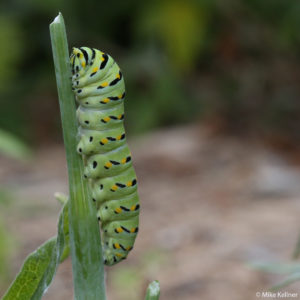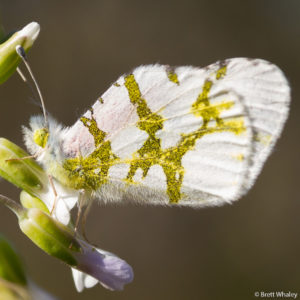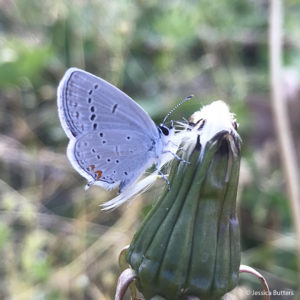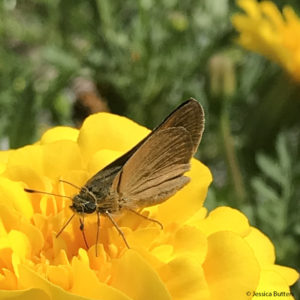Did you know that National Moth Week is celebrated in July? Read up on Iowa’s native moths and butterflies to be ready to celebrate Moth Week right, from July 23rd to 31st!
Iowa is home to about 110 butterfly species, and over 2,000 moth species! Butterflies and moths are related: both are in the insect order Lepidoptera, which roughly translates to “scaled wing”. Most of us think of moths as the ugly stepsisters of butterflies, but this is not true! In fact, I would call moths the sleeping beauties of our natural world (they are beauties that are often active while we sleep). Don’t continue to sleep on the incredible beauty of Iowa moths, and get to know our butterflies better!
Giant Silk Moths
If you’re lucky enough to have seen a luna moth, then you’ve seen a member of the giant silk moth group, called the Saturniidae family (Saturnia is the daughter of Saturn in Greek mythology). This group also includes the cecropia moth, named after Cecrops, a half-man-half-snake king in Greek mythology. If you squint at the top outer corner of the cecropia moth’s front wing by the dark eyespot, you can see what appears to be a profile of a snake’s head. Lastly, the luna and cecropia moths don’t eat as adults – they have no mouths! They only eat as caterpillars, which is common in the mysterious world of moths.
Hawk Moths and Hummingbird Moths
Aptly named, these moths look and fly like humming birds, hovering while drinking nectar with their straw-like mouths (called a proboscis). Some also mimic bumble bees, like the snowberry clearwing pictured on the right! Belonging to the family Sphingidae, these moths can be diurnal (day-active) or nocturnal (night-active). Some species don’t eat as adults. For those that do, they are important pollinators for prairie orchid and primrose species!
Owlet and Underwing Moths
Most of these moths are the experts of disguise, using drab colors on their front wings to blend in with bark and dead leaves. They are in the family Noctuidae, the largest family of moths in North America. Underwing moths, however, have a secret weapon: their back wings can have bright colors that hide under the front wings, and can be flashed to startle a predator during escape!
Tiger Moths
When wooly bear caterpillars mature, they are called tiger moths, also known as the family Erebidae. These moths can have bright colors decorated with geometric lines, consequently nicknamed “tiger” moths. I saw the tiger moth pictured here the last week of June at Ada Hayden park! This species of tiger moth is called the “reversed haploa moth” due to the fact that it has two color variations: either geometric lines on the front wings with plain white back wings, or the reverse: plain white front wings with geometric back wings.
Brush-footed Butterflies
The family Nymphalidae, commonly called the brush-footed group, is one of the most popular groups of butterflies with monarchs, regal fritillaries, and painted ladies included in its ranks. Why are they called brush-foots? Their front legs are very small, and kept close to their body (similar to t-rex dinosaurs in my opinion). These front legs aren’t used for walking and are basically reduced to little “brushes”.
Swallowtails
While one of the most entrancing butterflies, swallowtails are tough; they overwinter here in Iowa! As caterpillars, this group (which is the family Papilionidae) spin their chrysalises and wait out the winter under dead leaves, giving us another reason to leave areas in our yard undisturbed this fall. The caterpillars of this group can just as awe-inspiring, with some having bright green colors, or eyespots that can make them look like snakes to scare predators away!
Whites and Sulphurs
This group of butterflies has a charming behavior; they like puddles! Belonging to the Pieridae family, these butterflies are the most likely to be found in a “puddling” group, sucking up extra nutrients in the water. Adult butterflies appear white, yellow, orange, and sometimes have black markings. One of the coolest butterflies in this group is the Olympia marble, a species of special concern in Iowa due to declining numbers. Just look at its metallic markings against snow-white wings!
Blues, Coppers, and Hairstreaks
These tiny butterflies are also called gossamer wings, due to the beautiful shimmer that reflects off their wings! These butterflies are a part of the family Lycaenidae, and also love visiting puddles, so don’t let their looks fool you; they are hardcore. Continuing that thought: the species Satyrium edwardsii, or Edward’s hairstreak, has some wild behavior as a caterpillar. At night it feeds on oak leaves, and during the day it rests in active ant nests for protection! This species is also a species of special concern in Iowa due to declining numbers.
Skippers
If you can’t tell if an insect is a butterfly or a moth, you may be looking at a skipper. Skippers are in the family Hesperiidae, and have chunky bodies with hooked, hockey-stick-shaped antennae. They appear carefree as they skip through the air. From the side, their wings give them a triangular, shark-fin shape. Out of the two butterfly species in Iowa considered endangered, one is a skipper, called the Dakota skipper. It requires high-quality prairie remnants, a habitat extremely hard to find in Iowa.
While many people love butterflies, these insects don’t always receive the respect they deserve being diverse and important wildlife. They are more than nature’s gems-they are important pollinators that have fun behaviors to appreciate! Moths are often forgotten, despite the fact that they can be bigger and more colorful than many butterfly species, and have the coolest adaptations, such as flashes of color and mouth-less adults! The world of moths and butterflies is not just a pretty one; it’s a wild one!

